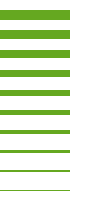https://doi.io-warnemuende.de/10.12754/msr-2017-0105
doi:10.12754/msr-2017-0105
© Author(s) 2017. This work is distributed
under

Dieses Werk ist lizenziert unter einer Creative Commons Namensnennung - Nicht kommerziell - Keine Bearbeitungen 4.0 International Lizenz.
Biological assessment of the Baltic Sea 2016
Abstract. Dating to 1979, the HELCOM time series on species composition, biomass and abundance of phyto- and zooplankton as well as macrozoobenthos from Kiel Bay to the Eastern Gotland Basin was continued in 2016. The phytoplankton spring bloom occurred almost simultaneously in the Belt Sea, Arkona Basin and Bornholm Basin, presumably in the first half of March. It was clearly dominated by diatoms, without significant contribution of Dictyocha in the Belt Sea. The western Arkona Basin was influenced by the Bay of Mecklenburg by elevated biomass at the end of February already. Darss Sill is not a strict border. A succession from diatoms and Mesodinium rubrum to dinoflagellates and finally to prymnesiophyceae appeared in some areas. In summer, a diatom bloom appeared in the Belt Sea and the western Arkona Basin. Satellite observations have shown that the cyanobacteria developed from mid May until mid September 2016 with lower intensity but longer duration than in other years. A strong autumn bloom was characterized by diatoms (Cerataulina pelagica), but not the typical Ceratium, in the Belt Sea. The chlorophyll a concentrations were highest (10.5 mg m-3) during the autumn bloom in the Bay of Mecklenburg at the beginning of November 2016. The seasonal pattern of vertical export of particulate organic matter in the Arkona Basin in 2016 showed a distinct peak in spring, a period of high flux during summer and high rates during late autumn with a clear succession of algal species within and between the sedimentation maxima. Summer flux was high and derived from a mixture of diatoms and cyanobacteria. The total annual flux for single elements in 2016 amounted to 718 mmol C (8.6 g C), 93 mmol N, 85 mmol Si and 3 mmol P m-2 a-1 at a mass flux of 70 g dry mass m-2 a-1. The mass weighted δ15N signature documents a lower nitrogen fixation than in the previous year. A considerable increase in the diversity of zooplankton was recorded in 2016. A total of 73 taxa were observed, which was related to the occurrence of pelagic larvae of benthic crustaceans, polychaetes and echinoderms. Among the cladocera the neozoon Cercopagis pengoi was found in the Arkona Basin. The seasonal development and the zooplankton composition were remarkably similar in the Kiel Bight, the Bay of Mecklenburg and the Arkona Sea. The spring increase in abundance occurred already in March and was caused by the early occurrence of high densities of rotifers. In contrast, the typical summer blooms of cladocera in the Arkona Sea were lacking. Copepods generally dominated the zooplankton. The 141 species found in the macrozoobenthos mark a high diversity, mainly driven by the high species number in the Kiel Bay. The oxygen supply in bottom waters in the current year was always higher than 2 ml/l; nevertheless we observed a significant decline in diversity and abundance at the stations in the Fehmarnbelt and Bay of Mecklenburg. Depending on the region, the abundances ranged from 78 to 8 830 ind./m², and the biomass (ash free dry weight) from 3.4 g/m² to 51.1 g/m². With 18 species and a salinity of 21.3 psu in the central Arkona Basin the indication of the saltwater inflow two years before is still visible. Nineteen species of the German Red List (Categories 1, 2, 3 and G) were observed at the 8 monitoring stations. With four, the number of invasive species in 2016 was low.
